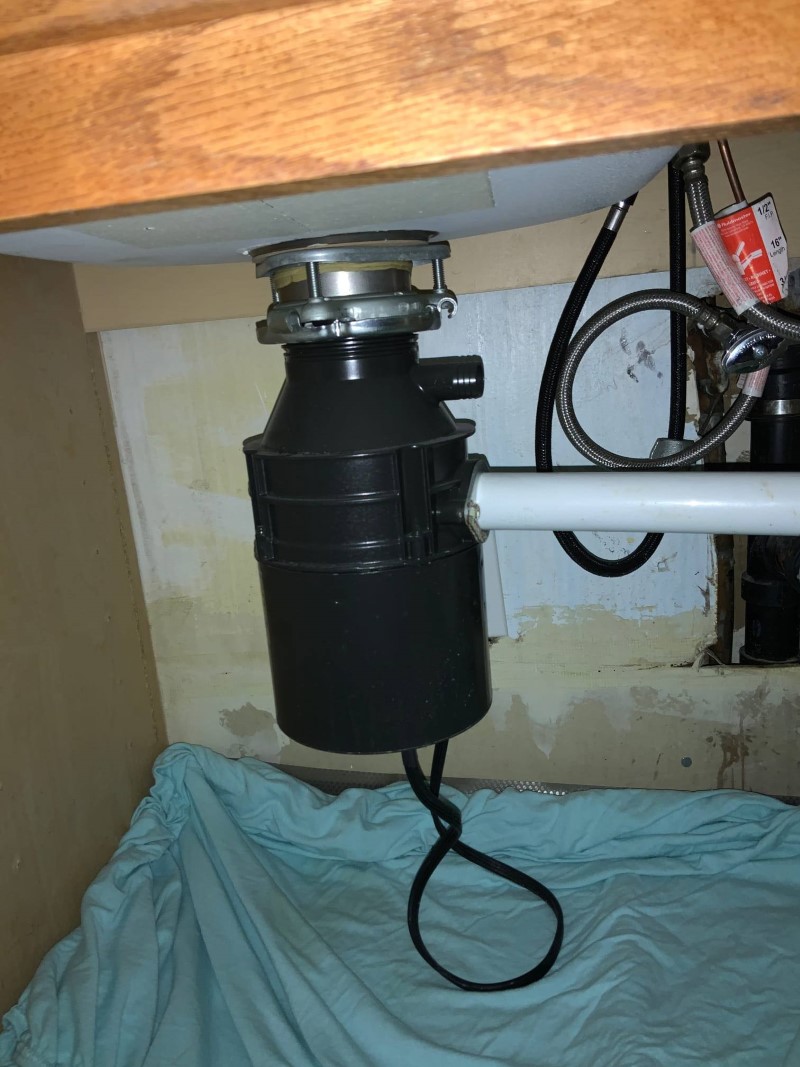Step by Step Instructions for Repairing a Leaky Waste Disposal
Call TodayWhat are your insights and beliefs on Garbage Disposal Leaking From Bottom?

Garbage disposals are crucial kitchen appliances that help in dealing with food waste effectively. However, a leaking waste disposal unit can be an irritating and unpleasant issue to handle. Thankfully, numerous leaks can be dealt with quickly with a couple of simple actions. In this article, we will review exactly how to repair a leaking waste disposal unit effectively.
Introduction
Waste disposal unit are mounted under cooking area sinks and are designed to shred food waste into smaller pieces, permitting it to pass through the plumbing system easily. While these gadgets are normally trusted, leakages can take place gradually as a result of wear and tear, loosened links, or damage to the unit.
Usual Sources Of Leakages in Trash Disposals
Worn Seals and Gaskets
Seals and gaskets play a critical duty in stopping water from leaking out of the garbage disposal. With time, these parts can weaken, leading to leaks around the disposal system.
Loose Connections
The links between the waste disposal unit and the plumbing system can come to be loose with time, causing water to leakage out during procedure.
Splits or Openings in the Disposal System
Physical damage to the garbage disposal, such as splits or openings in the real estate, can likewise lead to leakages.
Determining the Resource of the Leakage
Prior to trying to deal with a dripping waste disposal unit, it is vital to determine the resource of the leak. This can generally be done via visual examination or by carrying out straightforward tests.
Visual Inspection
Evaluate the garbage disposal system very carefully for any signs of water leak. Pay close attention to areas around seals, gaskets, and link points.
Testing for Leaks
One method to check for leakages is by running water via the disposal device and checking for any noticeable signs of leak.
Tools and Products Needed for Taking Care Of a Leaking Waste Disposal Unit
Before beginning the repair work procedure, gather the essential devices and materials, consisting of a screwdriver, flexible wrench, plumber's putty, substitute seals or gaskets, and epoxy or patching product for repairing cracks or openings.
Step-by-Step Overview to Taking Care Of a Dripping Garbage Disposal
Turn Off the Power
Before trying any kind of repair work, make certain that the power to the waste disposal unit unit is switched off to prevent the threat of electric shock.
Locate the Leak
Recognize the specific location of the leak and determine the reason.
Tighten up Connections
Make use of a wrench to tighten up any type of loose links between the disposal device and the pipes system.
Replace Seals or Gaskets
If the leak is due to worn seals or gaskets, get rid of the old elements and change them with new ones.
Patching Cracks or Holes
For splits or holes in the disposal device, use epoxy or an ideal patching product to seal the broken area.
Checking the Garbage Disposal After Repair Service
Once the repair service is full, test the garbage disposal by running water via it to ensure that the leak has been fixed.
Preventive Upkeep Tips to Stay Clear Of Future Leakages
To prevent future leakages, it is essential to carry out routine maintenance on your garbage disposal. This includes maintaining it clean, preventing putting non-food items or tough things down the disposal, and occasionally looking for leaks or various other concerns.
Verdict
To conclude, taking care of a leaking waste disposal unit is a reasonably simple procedure that can be completed with basic devices and materials. By adhering to the steps laid out in this write-up and practicing preventative maintenance, you can maintain your garbage disposal in good working condition and stay clear of costly repairs in the future.
What to Do About a Leaking Garbage Disposal
A leaking garbage disposal often goes unnoticed until you confront a sopping cabinet, a foul-smelling puddle, or an audible drip-drip-drip from the unit. The fix can be frustrating, too, because the leak can stem from a number of components in the system. Fortunately, with a little sleuthing, you can zero in on the leak and—depending on the exact location—stop the icky oozing and repair the component that caused it. Worst case scenario, if it turns out that the garbage disposal must be replaced, installing a new one is a reasonable do-it-yourself task for those with basic plumbing skills. Read on to keep the cash you’d otherwise hand over to a pro.
Prepare to find the leak
Prior to testing the garbage disposal for leaks, unplug it at the wall outlet and turn off the power from the breaker box to prevent electrical shock. Then insert a watertight sink stopper into your sink drain and wipe the unit dry with a clean cloth. In any handy container, mix a few drops of food coloring into a few cups of water, and pour the dyed water onto the sink stopper to help you locate the leak.
Investigate the source
the top, where the disposal meets the sink drain the side, where the dishwasher hose or main drain pipe connects to the disposal or the bottom of the unit Inspect each of these locations while gliding a light-colored rag over the unit; the dyed water will readily show on the rag and reveal the location of the leak. If a leak isn’t immediately apparent, remove the sink stopper and pour a few more cups of dyed water down the sink drain, then check for leaks again. Leaks near the top of the unit are more likely to show themselves while the sink is plugged, while side and bottom leaks are more noticeable while the sink is unplugged.
The metal sink flange that sits directly inside the sink drain is typically sealed around the top with plumber’s putty (a clay-like sealant) and then secured from under the sink with bolts. If the plumber’s putty deteriorates, or the bolts loosen, the flange can no longer form a watertight seal between the sink drain and the disposal—which could cause a leak at the top of the unit.
To reseal the leaky flange, you must first detach the garbage disposal. Start by loosening the screws securing the main drain pipe to the disposal, then loosen the screws in the metal clamp securing the dishwasher hose to the disposal and detach the drain pipe and dishwasher hose from the disposal. Loosen the screws in the mounting ring that connects the disposal to the metal mounting assembly beneath the sink, then pull down the disposal and carefully set it on a clean, dry surface. Loosen the bolts in the mounting assembly with a wrench, then pull down the mounting assembly and set it near the disposal.

I'm certainly very eager about The Handy Guide To Fixing Your Garbage Disposal Leaking and I'm hoping you enjoyed our entry. Enjoyed our blog posting? Please share it. Help someone else locate it. Thank you for going through it.
Go Deal